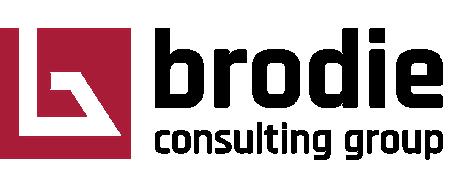

How tokenization is providing greater liquidity, fractional ownership, & transparency to alts investors.
With tokenisation gaining traction, we have asked some experts in this field to elaborate on what’s going on. In ‘Springtime for Tokenization’, Bitwise’s Vincent Molino, discusses how organisations have turned their attention to building tokenised products. Daphne Huang looks at how DeFi has shaken up the financial landscape with new smart contract technology and the critical nature of data interpretation. Eulith’s Lucas Gaylord takes a look at some of the noise surrounding tokenisation and the need for a secondary market. PwC’s Robert Mellor and James Stewart wrap up with the growth of retailisation and the role of tokenisation has to play within it. Changing tack, in Letter from America, Mark Kollar looks at the accelerated growth of today's private wealth channels.

#35
May 2024 A Brodie Consulting publication in conjunction with Capricorn Fund Managers and RQC Group.
Performance News Trends Regulatory updates

Macro managers on top in a tough April
After some exceptional months, April was a tougher hill to climb for many hedge managers as Middle Eastern tensions ratcheted up and the Fed’s path looked less clearcut. Click here to read more.
In such an environment, the HFRI Fund Weighted Composite fell -0.6%, while the Asset Weighted Composite index rose +0.9%, showing large funds are once more outperforming, with more macro-orientated managers in particular enjoying the month.
Equity managers bore the brunt of the pain as markets struggled to gain traction, as tech and healthcare sold-off, which is where many managers have at least a degree of exposure. Consequently, the HFRI Equity Hedge (Total) Index fell -1.6%. Hardest hit were Healthcare and Technology focused managers, down -4.3% and -3.0%, respectively. However, the one positive number was Energy/ Basic Materials, up +2.1%.
Event Driven likewise suffered from the equity backlash, with the Event Driven (Total) Index -1.9%.
The worst performing were the Activists, -8.0%, taking their year-to-date number into negative territory, -2.9%.
Credit Arbitrage and Distressed were marginally positive, both +0.1; while the Special Situations Index was down -2.6%.
In such turbulence and uncertainty, macro managers performed very well - doing what they are supposed to - with the Macro (Total) Index +1.5%. The more commodity-orientated managers were the best performers, notably those with metals exposure, +3.0%, followed by Discretionary Thematic, +2.1%. Systematic also had a good month, +1.7%.
Relative Value was also positive, with the Relative Value (Total) Index +0.3%. Within this, RV: Yield Alternatives was up +0.8%, followed by RV: Multi-Strategy, +0.7%.
Turning to the regions and it was a mixed bag, with Japan the hardest hit as the Japan index fell -4.1%, followed by Emerging Mar kets MENA, -2.5%, and Emerging Markets Latin America, -2.1%. North America was also down -2.0%, while Europe fared a little better, -0.3%. China, however, was positive, +3.0%, pulling up other Asia (ex-Japan) indices.
(All numbers quoted are HFRI)

H&F pulls in $24.1 billion
Hellman & Friedman has announced the close of its latest fund, Hellman & Friedman Capital Partners XI, at $22 billion, which comes in short of the fund's target of $24 billion. Separately, the firm has raised a further $2.1 billion for a secondary fund, taking the firm's total fundraising for these funds north of $24 billion.
Brand & Specialised fund flows
We often write about the big brands seeing the bulk of the inflows, but we are also seeing more specialised managers raising significant funds.
On the big brand front, we have the aforementioned Hellman & Friedman raise as well as Silver Lake's and KKR's. Silver Lake has just announced it has raised $20.5 billion for its seventh technology buyout fund. While KKR's fourth Asia Pacific fund raised $15 billion and its latest infrastructure fund is already at $11 billion after only five months of marketing, even before the fund's first close, with a target of $20 billion.
On the more specialised manager front, direct lender and creditfocused manager Golub Capital has announced the final close of its sixth credit opportunities fund, GEMS Fund 6, with $2 billion of investable capital, which is above the firm's target.
US non-competes out of window
The recent move by the Federal Trade Commission to ban noncompete clauses is going to have sizeable ramifications across our markets.
With so much value placed in a fund's proprietary investment strategies, private equity and hedge managers will fight tooth and nail to keep what they see as 'bad leavers' out of the market. We have seen this recently at Jane Street in its fight with Millennium.
In fact, a whole industry has been built around this, with managers heavily enforcing these clauses to keep their most valuable employees out of the marketplace for months, if not years, and these same managers are unlikely to stop now.
This move will open the door to a more fluid talent pool and the potential for more protracted legal fights.
Lawyers are poring through the 500 pages to find loopholes, while firms are, apparently, looking to restructure contracts to give them greater protection. The Financial Times writes that the move will 'force employers to be more creative'…
2 This newsletter is a selection of the previous month’s sector news, trends, regulatory developments and best practices. Any opinions expressed are those of the author only and the newsletter does not constitute personal advice or a personal recommendation. We always seek to maintain tight editorial standards. If you have any comments on this content, please do not May 2024 2 15 May Campden Wealth North American Family Legacy, Impact & Innovation 16 May Private Credit European Summit 2024 20 May 2024 Global Alts 2024 20 May 2024 SALT iConnections New York 22 May 2024 Moral MoneySummit Europe Upcoming Events Click here to see all the listings $16tn Estimated tokenized asset market size by 2030 Source: Boston Consulting Group $149bn Apollo inflows over the past 12 months Source: Apollo

UPDATES

Blackstone's results led by Credit & Insurance unit
Blackstone's Q1 results came in marginally ahead of forecasts.
The firm's assets under management now stand at $1.06 trillion, bolstered by quarterly inflows of $34 billion, and are up 7% year-on-year.
Strategy-wise, it was credit & insurance that led the way with healthy inflows, closely followed by private equity
Apollo hits records
In the first quarter of this year, Apollo Global Management originated a record $40 billion of private credit, which matched the quarter's inflows.
The firm reported 'solid fundraising' in its Global Wealth business with increased contributions from its semi-liquid products.
Apollo's total assets under management now stand at $671 billion, an impressive increase of $140 billion over the past 12 months.
and real estate. There were excellent performances in credit & insurance, with a gross return of 17.2% (net return 12.6%) for the strategy over one year.
Breakdown the total asset figures and real estate now accounts for $339 billion of assets, followed by credit & insurance at $330 billion, then private equity at $310 billion, and multi-asset
Investing at $82 billion.
There has also been much talk about the firm's dry powder, which stands at $191 billion, with $80 billion sitting on the sidelines for private equity investment, $64 billion for real estate, $41 billion for credit & insurance, and $6 billion for multi-asset investing.
Improving capital markets
Speaking to the Financial Times, Blackstone President Jonathan Gray has said how difficult it has been to sell assets recently, but the firm is now "definitely seeing more transaction activity."
The private equity sector currently sits on a record number of unsold assets, totalling $3 trillion. The recent uptick in capital market confidence was best reflected by the April US IPO
KKR looks to grow green assets
Although BlackRock has received a green backlash, this has not kept other large firms from heading down this path.
One of which is KKR, which has made a point of integrating sustainability into its investment process and has recently announced that it has hired Ben van Beurden, former Shell CEO, to advise on green investments.
Van Beurden, who left Shell at the end of 2022, told the Financial Times that KKR could invest in vehicle electrification, hydrogen consumption and battery technology. KKR's $59 billion infrastructure investment unit has already invested $15 billion in energy transition businesses.
market, which had its biggest month since September last year, and even Europe had the Puig IPO, which was the largest this year. However, for the market to take off, we need to see US interest rates come down, or at least more cast iron guidance, and a more stable geopolitical environment.

3 This newsletter is a selection of the previous month’s sector news, trends, regulatory developments and best practices. Any opinions expressed are those of the author only and the newsletter does not constitute personal advice or a personal recommendation. We always seek to maintain tight editorial standards. If you have any comments on this content, please do not hesitate to get in touch with the team. May 2024 3
(cont.)

There's something dirty in the water UPDATES
After CVC, who's next to IPO?
CVC's shares flew on their first day of trading on Euronext Amsterdam (they then fell a touch immediately afterwards).
This IPO was a valuable shot in the arm for the European IPO market, with the shares trading at €17.34 on the first day, up 24% on the €14 offer price.
With private equity fundraising not
always straightforward and questions about future-proofing firms, other firms are watching this closely. Furthermore, with the offering oversubscribed multiple times shows that there is genuine demand.
Additionally, the IPO gives CVC an additional €250 million of capital.
The success of the float has made
Man Group still on track for $200bn
Man Group's first quarter results were something to cheer about, showing the firm on track to hit the $200 billion marker, driven by performance.
Man has the wind behind it, growing its assets to $175.7 billion from $167.5 billion. Investment performance for the quarter added $9.8 billion, with $4.5 billion coming from its alternatives business, taking this side of the business to $111.3 billion, and $5.3 billion from longonly strategies, which now totals $64.4 billion.
The one negative in the statement was net flows, which were down $1.6 billion.
the three founding partners, Donald MacKenzie, Steven Koltes and Rolly van Rappard, among the wealthiest in the private equity sector, but it also sees change at the top, with MacKenzie and Koltes stepping back from the firm while van Rappard staying on as chairman.
In the UK, the poor state of the rivers has suddenly become a concern for hedge funds. Rather than environmental reasons, funds see an opportunity to profit from many of the poorly run businesses.
According to reports, Millennium Management and Arrowstreet have recently gone short UK water companies. Such moves are not exactly new, with the Canada Pension Plan Investment Board (CPPI) shorting Severn Trent and United Utilities last year. Elliott has also been buying bonds in Thames Water, which has the highest ratio of debt to equity of any UK water company and the worst track record for water leaks in the UK.

High speed fight
The legal spat between Jane Street Capital and Millennium Management continues, with Jane Street failing to gain a restraining order against Millennium.
This concerns an international options trading strategy that Jane Street believes was stolen after two employees, Douglas Schadewald and Daniel Spottiswood, left in February.
The Financial Times quotes US district judge Paul Engelmayer as saying, "Jane Street has certainly identified smoke, but it has not established a fire."
The filings on this have been heavily redacted, with Jane Street determined to keep large parts of its high-speed trading strategy secret and they even attempted to keep the press out of the hearing.
4 This newsletter is a selection of the previous month’s sector news, trends, regulatory developments and best practices. Any opinions expressed are those of the author only and the newsletter does not constitute personal advice or a personal recommendation. We always seek to maintain tight editorial standards. If you have any comments on this content, please do not hesitate to get in touch with the team. May 2024 4
(cont.)

(cont.)
Ice cold in Antara UPDATES
Talpins returns $4bn
Bloomberg got the story on Teff Talpins' New York based hedge fund, Element Capital Management, returning $4 billion to investors. This move comes as Talpins resizes its business to a more manageable level to improve poor fund returns. Controversially, this isn't a case of returning money to everyone, with smaller investors redeemed while larger ones 'stay in and potentially recoup their losses.' Element will be running around $5 billion of assets at the end of this process.
Another Bloomberg scoop was Antara Capital side-pocketing certain illiquid assets after 'piling on losses.' The Blackstonebacked fund, which manages around $1.2 billion, has reported two years of losses after some spectacular gains in 2020, up 58%, and 2021, up 23.4%. According to the report, the fund would have been in positive territory in 2023 if not for the drag of the illiquid private investments.
Targeting private wealth Citadel invests in London
Investment firms are continuing to build out their alternative private wealth products and teams.
Recent examples include Neuberger Berman officially launching a semiliquid fund, NB Global Private Equity Access fund, with a minimum subscription of €10,000, to co-invest in secondary investments. While
Coutts has partnered with JPMorgan Asset Management to launch a liquid alternatives fund. And over at EQT, Peter Aliprantis has been hired to head up the private wealth management business in the Americas, joining from TPG Angelo Gordon, where he was partner and MD of their global intermediary distribution.
Elliott looks at
Anglo American
Elliott has built a 2.6% position in UK listed miner Anglo American worth around $1 billion. This follows the BHP bid, which was rejected as being opportunistic and undervaluing the miner. Investors are now looking for clarification on the firm's plans, waiting for an increased bid from BHP, or interest from Rio Tinto or Glencore. It is unclear if this investment is related to Elliott launching Hyperion, its new business mandated to invest in mining assets.
Following in the footsteps of Blackstone, Citadel is doubling down on London.
London is already the firm's largest office in Europe, but Citadel has agreed to "dramatically increase" its 'footprint' by up to two-thirds, with a new London development in Broadgate, which is set for completion in 2027.
Citadel MD Ken Griffin has made it absolutely clear that he doesn't believe in the hybrid office and that you can only effectively run a team by physically having a group of people under the same roof.

Crypto flies
One of the most active investment spaces today is crypto, partly driven by extraordinary returns but also the opportunity to diversify and create new offerings.
According to Hedge Fund Research, crypto strategies were up 47.9% in the first quarter, taking the trailing six-month return to 10.9%.
Money is also flowing into crypto from
more diverse channels, as private investors and institutions get braver, and you are now starting to see new funds launch in the space - primarily specialised - such as Nexyst Digital, which has just launched two new crypto vehicles.
You have also seen Hong Kong follow the US with the first Asian bitcoin and ether ETFs being launched.
Not wanting to lose out, more established hedge funds are also building out their crypto teams and businesses, with Brevan Howard one of the biggest names with its established digital arm, as well as Point72, which this year has been actively building its crypto presence.
5 This newsletter is a selection of the previous month’s sector news, trends, regulatory developments and best practices. Any opinions expressed are those of the author only and the newsletter does not constitute personal advice or a personal recommendation. We always seek to maintain tight editorial standards. If you have any comments on this content, please do not hesitate to get in touch with the team. May 2024 5
REGULATION LETTER FROM AMERICA

Alts Managers Accelerate Moves to Attract Wealth Channel in Competitive Race for New Funds
Follow the money: For the alts industry, the clear fundraising path to follow was lined with institutional investors, from pension funds, insurance companies, foundations and endowments to sovereign wealth funds, to name a few. This has changed in the past year or so with these investors showing less of an appetite for alts (blame headwinds like tough deal environment, overallocation, interest rate concerns) even though demand to raise money remains high and competitive.
Enter the private wealth investor, long a thought bubble for liquidity, but is now fast becoming the most soughtafter target. The private wealth channel, as it is often called, of high-net-worth individuals have only about 2 percent allocated to private markets, according to a recent Hamilton Lane report, an extremely small but mighty percent of a big pool of capital.

whose advisors are looking for differentiation and even education on what alts can deliver for their clients. Look at Blackstone, who has been an early player. Its president and chief operating officer, Jonathan Gray was featured on the cover of Forbes in the February/March 2024 issue claiming a new era of private equity with individual-friendly funds poised for “an $80 trillion opportunity.” Front and center. Loud and clear.
[A strong brand] is important to attract the wealth market, whose advisors are looking for differentiation and even education on what alts can deliver for their clients.
A few other data points from Hamilton Lane, a private markets investment firm, show that private wealth managers likely ended last year with about $58 trillion in assets under management, compared with about $51 trillion from 2022. What’s more, research shows from the same report that if private-wealth investor allocation increased from that mere 2 percent to just 3 percent, another $580 billion of AUM will be added to private markets. That is big money to follow.
So what does this path look like now because it is not a familiar landscape for alts managers and comes with some expensive barriers to entry? What will matter now more than ever is profile, product and platforms.
First, a big profile -- or building a strong brand – is important to attract the wealth market,
To that end, on the product side, Blackstone launched two funds directed at the individual investor, one focused on real estate (BREIT) and another credit (BCRED). Both have been successful amid some lessons learned, especially on the real estate fund, as redemptions hit hard during the market pullback. Ares Management and Apollo Global Management have entered the market and Carlyle has said that plans are in the works.
Market competition is fierce but not just within the specialized alternatives managers world. Retail giants have muscled their way in as well, taking a commanding lead. In fact, according to research from NMG Consulting, six of the top 10 retail alternative firms reportedly are not “pure-play alts managers” but instead include marquee names like Blackrock, GSAM, Fidelity and others. The big advantage here? Brand and distribution, the infrastructure, personnel and platforms to move product. To win this game, the alts managers will continue to build their brands and set up retail distribution networks for their products so that the money will indeed follow.
 Mark Kollar Partner, Prosek Partners
Mark Kollar Partner, Prosek Partners
6 This newsletter is a selection of the previous month’s sector news, trends, regulatory developments and best practices. Any opinions expressed are those of the author only and the newsletter does not constitute personal advice or a personal recommendation. We always seek to maintain tight editorial standards. If you have any comments on this content, please do not hesitate to get in touch with the team. 6

GUEST ARTICLES
Springtime for Tokenization
Vincent Molino, Head of Operational Due Diligence, Bitwise Asset Management
It’s once again that time of year where winter’s thaw has ebbed, cool showers are raining on warming grounds, and dried brown stems are forming green shoots. However, new growth is not just showing up in our garden beds—it is also renewing itself in both institutional investing and in crypto… but it will require planting the right seeds.
In recent months, financial services organizations have turned their attention to the capabilities of tokenization. For those not yet familiar with the term, it involves creating a unique digital representation of a real thing or asset and recording it on a blockchain. (Ethereum is often the preferred chain for such applications.) Some applications of tokenization that have grown in acceptance are tokenizing real-world assets (RWAs), using token infrastructure to bring existing investment products “onchain,” or as we’ve been hearing from the venture capital community, accepting tokens of startups either as a form of, or in addition to, equity.
No doubt, the token infrastructure for institutions, and the capabilities of the DeFi networks which underpin these projects, have demonstrated a steady pace of acceptance and application for certain use cases. However, the question for an institutional investor should be, “How else can tokenization be applied?”

Well, the average institutional investor reading this is likely familiar with the manual and administrative burden required of investing in private alternative investment funds (hedge funds, private equity, etc.). From completing limited partnership agreements or subscription forms, to providing proof of identity (i.e., AML and KYC) and wiring cash, to eventually receiving and parsing investment statements, all of it requires hours of time and often manual application. Imagine the resources spent on such tasks as collecting investment information into databases for portfolio management and accounting, not to mention the costs of custody and data storage.
Because tokenization provides an immutable record of ownership on a blockchain, it can alleviate some of these administrative burdens. Recent examples of tokenized private equity funds and money market funds have clearly demonstrated the potential efficiencies and solutions that tokenization can provide.
But let’s take the concept of private fund tokenization a step further, by focusing on one of the benefits of tokenized money market funds.
As institutional investors are very much aware, valuing and selling private investment funds is a much different process than doing so with liquid

...financial services organizations have turned their attention to the capabilities of tokenization... tokenizing real world assets (RWAs), using token infrastructures “onchain"... [or] accepting tokens of startups...
Vincent Molino, Bitwise Asset Management
7 This newsletter is a selection of the previous month’s sector news, trends, regulatory developments and best practices. Any opinions expressed are those of the author only and the newsletter does not constitute personal advice or a personal recommendation. We always seek to maintain tight editorial standards. If you have any comments on this content, please do not hesitate to get in touch with the team. May 2024 7

GUEST ARTICLES
(cont.)
assets. If one wants to transact in a private fund in a secondary market, the time it takes to arrange and complete such transactions, and often the illiquidity haircuts applied throughout the process of selling into a secondary market, produce a good amount of consternation that could otherwise be alleviated if there were a readily available market for investing in—and divesting of—private investment funds.
Conceptually, tokenization can induce a market with implied liquidity and open pricing, creating a cryptoenabled version of a private fund secondary market.
The benefits of such a market would include not only real-time pricing and transacting of such funds, but also potential acceptance of such portfolio holdings as a form of collateral placement for leverage (borrowing) or loan purposes, as well as other financing activities. (Indeed, a well-known crypto broker recently announced just such an arrangement, whereby tokenized shares of a large asset manager’s money market fund can now be accepted as collateral.)
In fact, in conceiving of such a liquid secondary market for tokenized private fund investments, there is no reason why the impact of illiquidity on the valuations and pricing of such holdings can’t be offset by the technical capabilities of blockchains. Using a
"smart contract" (a program that runs autonomously on a blockchain) to calculate the price of a token could keep the token's price closer to the net asset value (NAV) of the respective fund, with perhaps only modest impacts to the price to account for blockchain validator and crypto gas fees.
Therefore, in contrast to current private fund secondary markets, which necessitate illiquidity haircuts, the enhanced liquidity and transparency provided by tokenization—as well as the elimination of administrative repapering of ownership, approval or consent by general partners, fees charged by brokering intermediaries, and other barriers to efficient transacting—would reduce the impact on the true value of the asset (or the actual fund NAV).

In “thawing” the private fund secondary markets through tokenized private investment funds, institutional investors have a way to create a new financial market through either selling, buying or pledging their private fund holdings. This can unlock potential capital efficiency for trillions of dollars in current private fund portfolios, giving both institutional portfolios and the crypto industry the right conditions needed to grow and
Vincent
Molino, Head of Operational Due Diligence, Bitwise Asset Management


...such a market would include not only real-time pricing and transacting of such funds, but also potential acceptance of such portfolio holdings as a form of collateral placement for leverage (borrowing) or loan purposes...
Vincent Molino, Bitwise Asset Management
8 This newsletter is a selection of the previous month’s sector news, trends, regulatory developments and best practices. Any opinions expressed are those of the author only and the newsletter does not constitute personal advice or a personal recommendation. We always seek to maintain tight editorial standards. If you have any comments on this content, please do not hesitate to get in touch with the team. May 2024 8

Tokenization: Signal in the Noise
Lucas Gaylord, CEO & Founder, Eulith
When is Tokenization Good and When Is It Bad?
“Tokenization” is the application of smart contracts to securities, commodities, real estate, and other asset classes. It is useful when it either:
1. Decreases the cost of using (transfering, trading, lending, etc.) the asset or
2. Increases the productivity of the asset
Good
For example, trading private shares in a pre-IPO company often comes at high legal costs because disagreements can arise between the buyer and seller as to the historical record of ownership for the security. The high legal fees are largely the cost of winning a disagreement were it ever to go to arbitration.
“Tokenizing” private shares, allows this
history of ownership to be recorded on a blockchain, which is both impartial and immutable, removing the need for lawyers to keep a detailed paper trail - and the associated costs.
Bad

Tokenization does more harm than good when it increases operating costs without a marginal increase in asset productivity. For example, in many jurisdictions, courts do not recognize smart contracts or on-chain transactions as having legal precedence over conventional paperwork. It is then necessary to maintain the conventional paperwork; consequently, operating costs increase without any marginal benefit in the productivity of the asset.
A common case in which the benefit is more “gray” is real estate tokenization. Many firms look to tokenize real estate with the ambition that it will make their portfolio more liquid


... tokenization has already and will continue to increase transparency and lower costs between individual buyers and sellers, in a market that is dominated by middlemen.
Lucas Gaylord, CEO & Founder, Eulith
9 This newsletter is a selection of the previous month’s sector news, trends, regulatory developments and best practices. Any opinions expressed are those of the author only and the newsletter does not constitute personal advice or a personal recommendation. We always seek to maintain tight editorial standards. If you have any comments on this content, please do not hesitate to get in touch with the team. May 2024 9
(cont.)
GUEST ARTICLES

GUEST ARTICLES

Only
in the last year have
there emerged the regulatory infrastructure necessary




for














































































or more valuable. This ambition does not seem to be historically informed. In contrast, I believe tokenization has already and will continue to increase transparency and lower costs between individual buyers and sellers, in a market that is dominated by middlemen. Real estate tokenization is a nuanced case - based on my observation, it does not appear to organically increase liquidity or add a premium to large, corporate-owned real estate, but it does appear to increase transparency and decrease costs between individually owned properties.
Secondary Markets: The Future
I have seen a range of assets tokenized, from a traditional fund share class to the future stream of a YouTube influencer’s cash flows. What I have not seen are successful secondary markets for these assets. Secondary markets are needed not only to transact more fluidly, but also to make unproductive assets productive e.g. by using them as collateral. Only in the last year have there emerged the regulatory infrastructure necessary for the creation of secondary trading venues for blockchain native assets. While most of these frameworks are still sandboxed or part
the creation of secondary trading venues for blockchain native assets... blockchain native secondary markets are next on the horizon for tokenization.








































Lucas Gaylord, CEO & Founder, Eulith
























of pilot programs, the overall trajectory seems clearblockchain native secondary markets are next on the horizon for tokenization.
Lucas Gaylord, CEO & Founder, Eulith
The Eulith team has been building in traditional fintech since 1999 and in DeFi since 2017. Their leadership has advised the SEC and led the development of one of the largest Ethereum code bases globally (14,000 Solidity/Yul LOC, ca. 2021).
The breadth and depth of their experience is reflected in their products' robust engineering. Their last enterprise, a digital assets derivatives exchange and CLO market, was acquired by Amber Group in 2021.
www.eulith.com/
10 This newsletter is a selection of the previous month’s sector news, trends, regulatory developments and best practices. Any opinions expressed are those of the author only and the newsletter does not constitute personal advice or a personal recommendation. We always seek to maintain tight editorial standards. If you have any comments on this content, please do not hesitate to get in touch with the team. May 2024 10
(cont.)

GUEST ARTICLES (cont.)
DeFi’s Next Catalyst is Not What You Think
Daphne Huang
Decentralized finance (DeFi) is shaking up the financial landscape. The rise of Real World Assets (RWAs) on the blockchain, as evidenced by high-profile launches like BlackRock’s recent BUIDL fund, highlights the growing acceptance and excitement surrounding this technology. RWA’s applications, ranging from real estate to whiskey barrels, benefit from the inherent characteristics of Distributed Ledger Technology (DLT), which offers superior operational and distribution efficiencies compared to conventional systems.
Optimism about the future of DeFi is well-founded, given the trajectory of technological advancements. However, there is broad recognition that ongoing refinement of DeFi infrastructure is essential for fostering clear, accountable, and reliable financial practices. Without tooling to help users track and account for DeFi activity, the space will stall despite attractive returns and cost savings. But from where I sit, there is a surge of talent and capital clamoring to address DeFi’s challenges and make products easier for fund managers and investors to navigate effectively.

Underpinning all of DeFi is smart contract technology. In RWA, the investing lifecycle and rules around what investors can do with tokenized assets (transfers, withdrawals, trading) are governed by a smart contract, or programmable logic enshrining these rules in lines of code. More adventurous flavors of DeFi (say you want to take your tokenized RWA and borrow against it) share a similar construct, with smart contracts governing permissible activity. So, it shouldn’t be surprising that the ability to capture and interpret smart contract activity in ways that make this data both useful and actionable is critical. In other words, the real catalyst for DeFi growth is our ability to translate DeFi activity so that it can be relied upon by investors. Reading and translating DeFi data presents real challenges though, here’s why:
• DeFi is Bespoke: Each new smart contract participation requires a new exercise in understanding how to derive the data required to track and calculate returns accurately. Across several DeFi contracts, this can be a tall task.
• DeFi is Complex: DeFi’s innovations make it

Underpinning all of DeFi is smart contract technology. In RWA, the investing lifecycle and rules around what investors can do with tokenized assets are governed by a smart contract, or programmable logic enshrining these rules in lines of code.
Daphne Huang
11 This newsletter is a selection of the previous month’s sector news, trends, regulatory developments and best practices. Any opinions expressed are those of the author only and the newsletter does not constitute personal advice or a personal recommendation. We always seek to maintain tight editorial standards. If you have any comments on this content, please do not hesitate to get in touch with the team. May 2024 11

GUEST ARTICLES
particularly complex. For example, the concept of impermanent loss is a unique risk in DeFi liquidity pool participation. DeFi interest income can be accrued via various tokens, and across multiple tokens depending on the product. More recently, the introduction of “points” incentives are a new challenge to track and account for. All of these mechanisms are captured in different parts of the smart contract.
• DeFi Requires Infrastructure: understanding smart contract mechanics, specialized infrastructure is essential to ensure completeness in capturing and accounting for all of the events emitted.
Fortunately, there are teams building solutions to address these hurdles.
The key lies in tooling capable of interpreting smart contract activity systematically and in real-time; robust data infrastructure that investors can trust to make informed investing decisions. For example, realtime Net Asset Values (NAVs), to facilitate 24/7 trading in on-chain funds. Tracking DeFi activity efficiently often
requires specialized data services. Such systems automatically process and translate smart contract events into familiar financial metrics, ensuring stakeholders don’t miss a beat and are able to fully leverage the real-time nature of blockchain. There is plenty more work to do, but as more assets move onchain, I’m confident new tools will emerge to simplify on-chain investing and position the DeFi ecosystem for exponential growth.

Daphne advises companies on digital assets, product strategy, and growth and was most recently Head of Product at data infrastructure startup OpenPool.
Daphne has 20 years of experience in payments, consumer lending, wealth management and investment management having held senior leadership roles at Early Warning Services (Zelle),


The key lies in tooling capable of interpreting smart contract activity systematically and in real-time; and robust data infrastructure that investors can trust to make informed investing decisions.
Huang
12 This newsletter is a selection of the previous month’s sector news, trends, regulatory developments and best practices. Any opinions expressed are those of the author only and the newsletter does not constitute personal advice or a personal recommendation. We always seek to maintain tight editorial standards. If you have any comments on this content, please do not hesitate to get in touch with the team. May 2024 12
(cont.)
Daphne

Inspiring interviews with global business and finance leaders Money


.... by providing a low capital, digitalised version of gold that maps back in a risk free manner to this database will open the floodgates to many investment managers because for the first time, I believe they will have an asset to trade that is, capital light, is fully transparent, that is easy to see...
David Tait, CEO of World Gold Council

www.moneymazepodcast.com
Listen Notes Top 1% of all podcasts
Source:
PodcastMaze

Retailisation and the role of tokenisation for AIF managers
Robert Mellor, Partner, Alternative Investment Funds, PwC
.James Stewart, Partner, Asset & Wealth Management Tax, PwC
The landscape of alternative investment funds is undergoing a significant transformation, as individual investors seek to access nontraditional asset classes and strategies that were once restricted to institutional and professional investors. This trend, known as retailisation, is driven by a combination of regulatory change, investor appetite, and the development of digital-based distribution and investing platforms.
PwC recently published its 2023 research piece on the global Asset and Wealth Manager (AWM) landscape, and undeniably, one of the key enablers of retailisation is tokenisation, the process of creating digital representations of real-world assets or funds on a blockchain or distributed ledger technology (DLT)
platform. With the securities tokenisation market regarded as having one of the highest potentials for growth by the OECD, this comes as no surprise.

Tokenisation can offer several benefits for AIF managers and investors, such as:
Enhanced liquidity: Tokenisation can improve the transferability and liquidity of traditionally illiquid AIF assets, such as private equity, real estate, and private credit, by allowing fractional ownership and secondary market trading. This can also reduce the need for lock-up periods and redemption gates, and enable more flexible portfolio management.
Reduced costs: Tokenisation can lower the administrative and operational costs of AIFs, by automating transactions, streamlining workflows, and reducing intermediaries


Tokenisation can improve the transferability and liquidity of traditionally illiquid AIF assets, such as private equity, real estate, and private credit, by allowing fractional ownership and secondary market trading.
Robert Mellor & James Stewart, PwC
14 This newsletter is a selection of the previous month’s sector news, trends, regulatory developments and best practices. Any opinions expressed are those of the author only and the newsletter does not constitute personal advice or a personal recommendation. We always seek to maintain tight editorial standards. If you have any comments on this content, please do not hesitate to get in touch with the team. May 2024 14
GUEST ARTICLES (cont.)
Robert Mellor, PwC

GUEST ARTICLES (cont.)


...AIF managers who can embrace and harness tokenisation can enhance their performance, reputation, and impact, and become a key driver of the AWM revolution.
Robert Mellor & James Stewart, PwC
and fees. This can also increase the scalability and profitability of AIFs, and make them more accessible and affordable for individual investors.
• Increased transparency and security: Tokenisation can enhance the transparency and security of AIFs, by providing real-time and verifiable information on asset ownership, performance, and valuation. This can also improve the compliance and risk management of AIFs, and foster trust and confidence among investors and regulators.
However, tokenisation also poses some challenges and risks for AIF managers, such as:
• Regulatory uncertainty: Tokenisation is subject to a complex and evolving regulatory framework, which may vary across jurisdictions and asset classes. AIF managers need to ensure that their tokenised products comply with the relevant rules and standards, such as those relating to investor protection, anti-money laundering, taxation, and data privacy.
• Technological complexity: Tokenisation requires a high level of technological expertise and infrastructure, which may not be readily available for AIF managers. AIF managers need to invest in developing and integrating the necessary systems and platforms, and
ensure their reliability, interoperability, and security.
• Cultural change: Tokenisation may entail a significant shift in the culture and mindset of AIF managers and investors, who may be accustomed to traditional fund structures and processes. AIF managers need to educate and communicate with their stakeholders, and foster a culture of innovation, agility, and ethics.
Tokenisation is a powerful and disruptive force that can reshape the AIF industry and enable retailisation. While tokenisation does not solve the significant tax and regulatory burdens of taking AIFs to a democratised range of investors, AIF managers who can embrace and harness tokenisation can enhance their performance, reputation, and impact, and become a key driver of the AWM revolution.
Robert

James Stewart, PwC
Mellor, Partner, Alternative Investment Funds, PwC; & James Stewart, Partner, Asset & Wealth Management Tax,
15 This newsletter is a selection of the previous month’s sector news, trends, regulatory developments and best practices. Any opinions expressed are those of the author only and the newsletter does not constitute personal advice or a personal recommendation. We always seek to maintain tight editorial standards. If you have any comments on this content, please do not hesitate to get in touch with the team. May 2024 15

REGULATION
UK
Presented by
FCA consults on option to permit “re-bundling” of research and execution services
On 10 April 2024, the FCA published its long awaited proposal for reforming the UK’s investment research regime.
The proposal introduces a “third option” for the consumption of research. In addition to paying separately for research, either by the firm itself or by the firm’s clients via research payment accounts (“RPAs”), for the first time since 2017, UK firms will have the option to “bundle” research and execution costs.
There are competing objectives which underpin the respective arguments for the bundling, or unbundling, of investment research with execution services.
“Bundling” permits greater costs efficiencies and value for money, fosters a broader range of available research, allows more flexibility and is more compatible with the U.S. regime.
“Unbundling” addresses concerns around transparency of costs, competition, bias and independence of research.
In recent times, the UK’s position has fluctuated between these. Before MiFID II, the bundling of research and execution services was permitted. Investment managers could enter into “soft commission” arrangements whereby a broker agreed to set aside a proportion of commission on transactions for the provision of “substantive research” received by the investment manager.
Under MiFID II, from January 2018, subject to certain exemptions, an investment manager can only receive research if paid for directly out of own resources or from a
separate RPA funded by a specific research charge to clients.
As part of the UK Edinburgh Reforms, which are aimed at driving growth and competitiveness in the financial services sector, the government commissioned the Independent Research Review (“IRR”). Published in July 2023, this recommended that the bundling of research and execution services be reinstated as an option.
The IRR concluded that the MiFID II unbundling requirements adversely impacted the provision of investment research in the UK, which in its turn potentially hampered economic growth. Further, the unbundling requirements would likely reduce UK investment managers’ access to global investment research, setting them at a competitive disadvantage from their international counterparts.
The FCA’s proposal echoes this sentiment, whilst setting out certain “guardrail” requirements for firms making bundled payments, including with respect to written policies and agreements, allocation structure, account administration, budget setting, cost allocation, review and disclosure.
The deadline for responding to the FCA’s Consultation Paper is 5 June 2024 and the FCA intends to publish final rules during 2024 – initially for MiFID investment firms and then for collective portfolio managers such as UCITS management companies and AIFMs.
Recent developments in the FCA’s sustainability regime
On 23 April 2024, the FCA published Consultation Paper CP24/8: Extending the Sustainability Disclosure Requirements (“SDR”) regime to Portfolio Management.
“SDR” refers to the FCA’s flagship regime on sustainability. As well as sustainability disclosure requirements, it covers investment labelling and anti-greenwashing. The FCA’s finalised rules on sustainability disclosure and investment labelling apply to “fiduciaries” such as UCITS management companies and AIFMs (in each instance, where the fund in question is UK domiciled). CP24/8 proposes extending these elements of the regime to other types of asset manager.
• Scope – type of firms
The FCA proposes extending SDR to firms carrying out portfolio management services. This includes firms with the regulatory permission, “Managing investments”, which therefore covers the discretionary management
of segregated accounts. It also includes investment advisory activity, in relation to private equity or other private market activities, on a recurring or ongoing basis.
• Scope – location of activity
The SDR extension would apply to firms that are FCA authorised and where the portfolio management activity takes place in the UK. This means portfolio management activity conducted at a non-UK branch would be out of scope.
• Scope – clients
The SDR extension would apply where the firm’s client is UK-based. However, it would not apply where the portfolio management activity is with respect to a fund i.e., where the client is either the fund itself or is a fund manager.
16 This newsletter is a selection of the previous month’s sector news, trends, regulatory developments and best practices. Any opinions expressed are those of the author only and the newsletter does not constitute personal advice or a personal recommendation. We always seek to maintain tight editorial standards. If you have any comments on this content, please do not hesitate to get in touch with the team. May 2024 16

REGULATION (cont.)

• Requirements – retail v non-retail
Recognising that SDR is slanted towards consumer protection, the SDR extension would apply differently to retail versus non-retail clients.
The deadline for responding to the consultation is 14 June 2024 and the FCA intends publishing final rules in the second half of 2024.
On the same day as CP24/8 was published, the FCA also released the final version of its anti-greenwashing guidance.
The anti-greenwashing rule, which takes effect on 31 May 2024, applies to all FCA regulated firms. Firms are required to ensure that any reference to the sustainability characteristics (i.e., environmental or social characteristics) of a product or services is:
a. consistent with the sustainability characteristics of the product or service; and
b. fair, clear and not misleading.
This applies to communications to UK clients about a product
or service, when communicating a financial promotion to a person in the UK and when approving a financial promotion for communication (by an unregulated firm) in the UK.
At a high level, the finalised guidance follows the previously published draft guidance. There is a focus on four “principles” that must adhered to when making sustainability references:
• Correct and capable of being substantiated;
• Clear and presented in a way that can be understood;
• Complete – they should not omit or hide important information and should consider the full life cycle of the product or service; and
• Fair and meaningful, in relation to any comparisons to other products or services.
The guidance provides additional detail on each of these and sets out some practical examples.
Asset Management: Common errors when applying for authorisation
The FCA has publicised some of the common errors that it has encountered where an asset manager applies for authorisation.
1. Senior management lacking experience and qualifications
This is typically due to proposed senior managers either:
• Lacking the competence and expertise to undertake the functions for this they have applied; and/or
• Not holding an appropriate level of seniority in the firm.
This includes where proposed senior managers have not held roles requiring prior experience, or who lack relevant/suitable qualifications. When questioned by the FCA, applicants have been unable to explain, in sufficient detail, the regulatory framework that applies to their business or how their proposed business model will work.
17 This newsletter is a selection of the previous month’s sector news, trends, regulatory developments and best practices. Any opinions expressed are those of the author only and the newsletter does not constitute personal advice or a personal recommendation. We always seek to maintain tight editorial standards. If you have any comments on this content, please do not hesitate to get in touch with the team. May 2024 17
by
Presented

REGULATION
2. Office locations outside the UK
One of the threshold conditions for becoming FCA authorised is ”location of offices”. This relates to the “mind and management” of a firm, which must reside in the UK. It is not sufficient for a firm only to perform tasks such as compliance and administration in the UK, or to have the business decision makers based outside the UK and visiting the UK from time to time.
3. Business models: exposing clients to risk
The FCA accepts that all business models pose risk. However, many applicants neither identify the risks that their business model poses nor adequately consider and evidence how they might remove or mitigate these risks.
4. Outsourcing: underestimating your accountability
The FCA has found that when outsourcing, some applicants have not considered the relevant rules, the firm’s responsibilities, and the impact on their business.
In particular, firms fail to appreciate that responsibility and oversight for outsourced activities will sit with the firm itself.
5. Conflicts of interest: failing to identify concerns
Managing and controlling third-party assets and money gives rise to potential conflicts between the interests of the client, the firm and related parties.
Some applicants fail to consider potential conflicts of interest adequately, or at all.
The FCA would raise concerns where it has identified conflicts that were not also identified by the applicant firm.
6. Redress: avoiding appropriate schemes that protect consumers
Some firms seek exemption from the Financial Ombudsman Service (“FOS”) and the Financial Services Compensation Scheme (“FSCS”) where this is not appropriate. This includes where firms assume that if they don’t have retail clients they are automatically out of scope, which is not the case.
7. Unready, unwilling or unorganised
The FCA expects applicants to be ready, willing and organised to carry out the activities that they plan to undertake.
Examples of the contrary include where applications are submitted without recruiting relevant senior managers or without having arranged for sufficient capital to be in place.
The FCA understands that circumstances might change during the lifecycle of an application. However, it is not willing either to put applications on hold for extended periods or to accept significant changes to the proposed model.
If there are significant changes, the FCA advises that firms should withdraw the application and then re-apply at a later date.
By publishing these common errors, the FCA will no doubt expect to see improvements in the quality of applications made by asset managers. The volume of applications withdrawn by firms or rejected by the FCA is high, and there might be some improvement in these figures.
U.S. regulators’ vigilance in enforcing against
off-channel communications
In a digital age where the number of electronic communication channels has rapidly grown, financial industry regulators face the challenge of monitoring and regulating off-channel communications. Off-channel communications are exchanges outside of firm approved media like company email and can include private emails, instant messaging apps, online forums and social media posts. We have even witnessed an enforcement action where the defendants made use of the online chat function through their Xbox console! Such communications offer much convenience and efficiency, but also present a significant regulatory concern due to their potential to facilitate insider trading and market abuse. As such, regulators have intensified their scrutiny of these communications, employing various mechanisms to enforce
compliance and maintain market integrity.
In response to the growing use of off-channel communications, the Securities and Exchange Commission (“SEC”) and the Commodity Futures Trading Commission (“CFTC”) have ramped up their enforcement efforts to monitor and regulate these platforms effectively. The enforcements against offchannel communications are rooted in both regulators’ mandates to protect investors, ensure fair and efficient markets and facilitate capital formation.
The SEC and CFTC have implemented stringent policies and regulations governing off-channel communications and passed these down to investment advisers. Firms are expected to maintain policies and procedures relating to communication devices and platforms on which employees are
18 This newsletter is a selection of the previous month’s sector news, trends, regulatory developments and best practices. Any opinions expressed are those of the author only and the newsletter does not constitute personal advice or a personal recommendation. We always seek to maintain tight editorial standards. If you have any comments on this content, please do not hesitate to get in touch with the team. May 2024 18
by
Presented
(cont.)
US

REGULATION (cont.)
authorized to create and receive electronic communications. Further, firms are expected to retain all firm-related electronic communications as part of their books and records.
One notable example of the SEC's response to off-channel communications is its increased focus on monitoring social media platforms. With the rise of Twitter (now 'X') and Reddit as popular forums for discussing investment opportunities, regulators have become increasingly vigilant in monitoring these channels for signs of market manipulation or dissemination of false information. High-profile cases, such as the SEC's investigation into Elon Musk's tweets about Tesla, underscore the regulatory scrutiny directed towards influential individuals' online statements that could impact
market dynamics.
Presented by
The SEC’s and CFTC's enforcement actions regarding off-channel communications reflect their commitment to maintaining fair and orderly markets. Both agencies have established specialized units dedicated to monitoring off-channel communications. By leveraging technology, expertise, and collaboration, regulators strive to identify and deter illicit activities while promoting transparency and investor confidence. However, as the financial landscape continues to evolve, ongoing vigilance and innovation will be crucial to staying ahead of emerging threats and safeguarding the integrity of the markets.

SEC issues Risk Alert providing initial observations regarding Marketing Rule compliance
The SEC’s Division of Examinations (the “Division”) has issued a Risk Alert to provide investment advisers, investors, and other market participants with information regarding investment advisers’ compliance with amended Rule 206(4)1 (the “Marketing Rule”).
Compliance Rule
Division staff noted that advisers’ compliance policies and procedures typically included processes to comply with the Marketing Rule, including staff training and marketing review and approval processes, but the Division’s staff observed failures in policies and procedures and the implementation thereof, including:
• Use of only general descriptions and expectations related to the Marketing Rule;
• Failure to address applicable marketing channels utilized by the advisers, such as websites and social media;
• Use of informal policies which were not always in writing;
• Use of policies not tailored to an adviser’s specific advertisements;
• Failure to address the preservation and maintenance of advertisements and related documents, such as copies of any questionnaires or surveys used in the preparation of a third-party rating; and,
• Failure to implement written policies.
Books and Records Rule
Advisers typically maintained updated policies and procedures to reflect Marketing Rule-related books and records preservation requirements, but Division staff nonetheless observed deficiencies, including:
• Completion of questionnaires or surveys used in the preparation of a third-party rating but failing to maintain a copy of such questionnaires;
• Failure to maintain copies of information posted to social media; and
• Failure to maintain documentation to support performance claims included in advertisements.
19 This newsletter is a selection of the previous month’s sector news, trends, regulatory developments and best practices. Any opinions expressed are those of the author only and the newsletter does not constitute personal advice or a personal recommendation. We always seek to maintain tight editorial standards. If you have any comments on this content, please do not hesitate to get in touch with the team. May 2024 19

REGULATION (cont.)
Form ADV
Division staff observed that many advisers had updated their Form ADVs, including Part 1A, Item 5.L and Part 2A, Item 14 disclosures related to advertising. However, there remained multiple instances where:
• Form ADV said no third-party ratings, when firm websites and social media posts included third-party ratings;
• Form ADV said no performance advertising, when firm’s performance results were included in advertisements;
• Form ADV said no hypothetical performance, when hypothetical performance was included in advertisements; and
• Outdated language from the prior Cash Solicitation Rule was used in the ADV Part 2A Brochure.
General Prohibitions
Division staff observed the following deficiencies relating to the Marketing Rule’s General Prohibitions:
i. Untrue statements of material fact and unsubstantiated statements of material fact
Division staff observed advertisements that included statements of material fact that appeared to be untrue. In such instances, the advisers typically ceased disseminating the advertisements or removed the untrue statements. In some cases, the advisers acknowledged that the statements of material fact were likely untrue after being unable to substantiate the statements.
ii. Omission of material facts or misleading inferences
Division staff observed advertisements that appeared to omit material facts necessary to make the statements made not misleading. The staff also observed advertisements including information that could reasonably have caused untrue or misleading inferences
to be drawn concerning material facts.
iii. Fair and balanced treatment of material risks or limitations
Division staff observed advertisements that included statements about the potential benefits connected with the advisers’ services that failed to provide fair and balanced treatment of material risks or limitations associated with the potential benefits.
iv. References to specific investment advice that were not presented in a fair and balanced manner
Division staff observed advertisements that included only the most profitable investments or specifically excluded certain investments without providing sufficient information and context to evaluate the rationale, such as investments that were written off at a loss or were lower performing investments.
v. Inclusion or exclusion of performance results or time periods in manners that were not fair and balanced
Division staff observed advertisements that included or excluded certain performance results or presented performance time periods in manners that were not fair and balanced.
vi. Advertisements that were otherwise materially misleading
Division staff observed advertisements that appeared to otherwise be materially misleading, such as presenting disclosures in an unreadable font on websites or in videos.
The Risk Alert concludes by encouraging advisers to reflect upon their own practices, policies, and procedures and to implement any appropriate modifications to their training, supervisory, oversight, and compliance programs.

20 This newsletter is a selection of the previous month’s sector news, trends, regulatory developments and best practices. Any opinions expressed are those of the author only and the newsletter does not constitute personal advice or a personal recommendation. We always seek to maintain tight editorial standards. If you have any comments on this content, please do not hesitate to get in touch with the team. May 2024 20
Presented by

SEC Enforcement Round-up:
SEC fines five investment advisers for violating the Marketing Rule
The SEC announced settled charges against five registered investment advisers for Marketing Rule violations, resulting in $200,000 in penalties.
All the firms maintained public websites that were accessible to the general public and used hypothetical performance on their websites. The SEC argued that all five firms failed to adopt and implement policies to ensure that their advertised hypothetical performances on their websites matched the financial situations and investment objectives of their intended audiences.
Four advisers received reduced penalties due to proactive corrections made before the SEC's intervention, totaling around $100,000 cumulatively.
The fifth firm, GeaSphere, was found to have committed multiple infractions, including making false advertising claims and failing to substantiate its advertised performance, a books and recordkeeping violation. GeaSphere was also found to have made misleading statements about its performance to a registered investment company client, and those statements were included in the client’s prospectus filed with the SEC. For all of these violations, it was fined $100,000.
This is the second set of cases that the SEC has brought as part of an ongoing targeted sweep concerning Marketing Rule violations after charging nine advisory firms in September 2023.

SEC fines investment adviser $6.5 million for recordkeeping and code of ethics failures
The SEC announced settled charges against registered investment adviser Senvest Management LLC (“Senvest”) for failing to preserve electronic communications and enforce its code of ethics. Notably, this marked the SEC’s first enforcement in this area against a standalone private fund investment adviser with no ties to a broker-dealer.
The SEC’s order found that from January 2019 to December 2021, Senvest employees used personal messaging apps for internal and external business communications, contrary to the firm’s policies and procedures. The firm therefore did not keep and archive the substantial majority of these communications.
In one instance, three senior employees were found to have used off-channel communications on devices that automatically deleted messages after 30 days. These auto-
deletions prevented the firm, and the SEC’s exam staff, from quantifying the actual number and subject matter of all offchannel communications at Senvest. Messages retrieved from other devices, however, confirmed that business-related messages had been auto-deleted, including communications required to be kept under the Advisers Act.
The SEC also alleges that the firm failed properly to implement its code of ethics when employees failed to obtain preclearance for certain trades involving their personal accounts.
For violating recordkeeping requirements and failing to enforce its code of ethics, the SEC fined Senvest $6.5 million and required the firm to retain a compliance consultant to review its policies and procedures.
21 This newsletter is a selection of the previous month’s sector news, trends, regulatory developments and best practices. Any opinions expressed are those of the author only and the newsletter does not constitute personal advice or a personal recommendation. We always seek to maintain tight editorial standards. If you have any comments on this content, please do not hesitate to get in touch with the team. May 2024 21 Presented by REGULATION (cont.)

REGULATION
(cont.)
Presented by
Jury sides with SEC in shadow insider trading case
On April 5, 2024, a jury sided with the SEC in SEC v. Panuwat, a case involving “shadow trading.” Although the SEC argues the case itself was not novel, others see it as an expansion of the misappropriation theory of insider trading where the information did not involve the company that was traded and no commercial connection between the companies existed.
Matthew Panuwat worked at Medivation, Inc., a mid-cap pharmaceutical company focused on oncology. The company had a broad personal trading policy covering publicly traded companies, including “significant collaborators, customers, partners, suppliers or competitors”.
On August 18, 2016, Mr. Panuwat received an email from his CEO that the company was to be acquired by Pfizer. Within seven minutes of receiving the email, he purchased shortterm call options in Incyte, Inc., a mid-cap pharmaceutical company focused on oncology. Four days later, Pfizer announced the acquisition of Medivation at a 21% premium.
After the announcement, Incyte’s share price increased by 8%, resulting in Mr. Panuwat receiving a $120,000 profit.
The SEC argued under the misappropriation theory of insider trading, where material non-public information is used to trade
in breach of a duty owed to the source of the information. The court agreed that the issue in the case came down to whether Mr. Panuwat was entrusted with confidential information from Medivation and, if so, whether he received consent to trade based on that information. The jury found Mr. Panuwat was guilty of insider trading.

Click here to subscribe to The Alternative Investor; or if you have a question about the publication or a suggestion for a guest article email the team at hello@alternativeinvestorportal.com

Brodie Consulting Group is an international marketing and communications consultancy, focused largely on the financial services sector.
Launched in 2019 by Alastair Crabbe, the former head of marketing and communications at Permal, the Brodie team has extensive experience advising funds on all aspects of their brand, marketing and communications.
Alastair Crabbe Director
Brodie Consulting Group
+44 (0) 778 526 8282 acrabbe@brodiecg.com www.brodiecg.com www.alternativeinvestorportal.com

Capricorn Fund Managers Limited is an investment management and regulatory hosting business that provides regulatory infrastructure and institutional quality operational, compliance and risk oversight. CFM is part of the Capricorn Group, an international family office, which has been involved in alternative assets since 1995.
Jonty Campion Director
Capricorn Fund Managers
+44 (0) 207 958 9127 jcampion@capricornfundmanagers.com www.capricornfundmanagers.com
RQC Group is an industry-leading crossborder compliance consultancy head-officed in London with a dedicated office in New York, specializing in FCA, SEC and CFTC/NFA Compliance Consulting and Regulatory Hosting services, with an elite team of compliance experts servicing over 150 clients, and providing regulatory platforms to host over 60 firms.
United Kingdom: +44 (0) 207 958 9127 contact-uk@rqcgroup.com
United States: +1 (646) 751 8726 contact-us@rqcgroup.com www.rqcgroup.com
Capricorn Fund Managers and RQC Group are proud members of

22 This newsletter is a selection of the previous month’s sector news, trends, regulatory developments and best practices. Any opinions expressed are those of the author only and the newsletter does not constitute personal advice or a personal recommendation. We always seek to maintain tight editorial standards. If you have any comments on this content, please do not hesitate to get in touch with the team. May 2024 22
Editorial Board
Alastair Crabbe acrabbe@brodiecg.com
Darryl Noik dnoik@capricornfundmanagers.com
Jonty Campion jcampion@capricornfundmanagers.com
Lynda Stoelker lstoelker@capricornfundmanagers.com

Visit www.alternativeinvestorportal.com


see past publications, industry events and more.
here to subscribe to all future copies. A Brodie Consulting publication in conjunction with Capricorn Fund Managers and RQC Group.
to
Click












 Mark Kollar Partner, Prosek Partners
Mark Kollar Partner, Prosek Partners
























































































